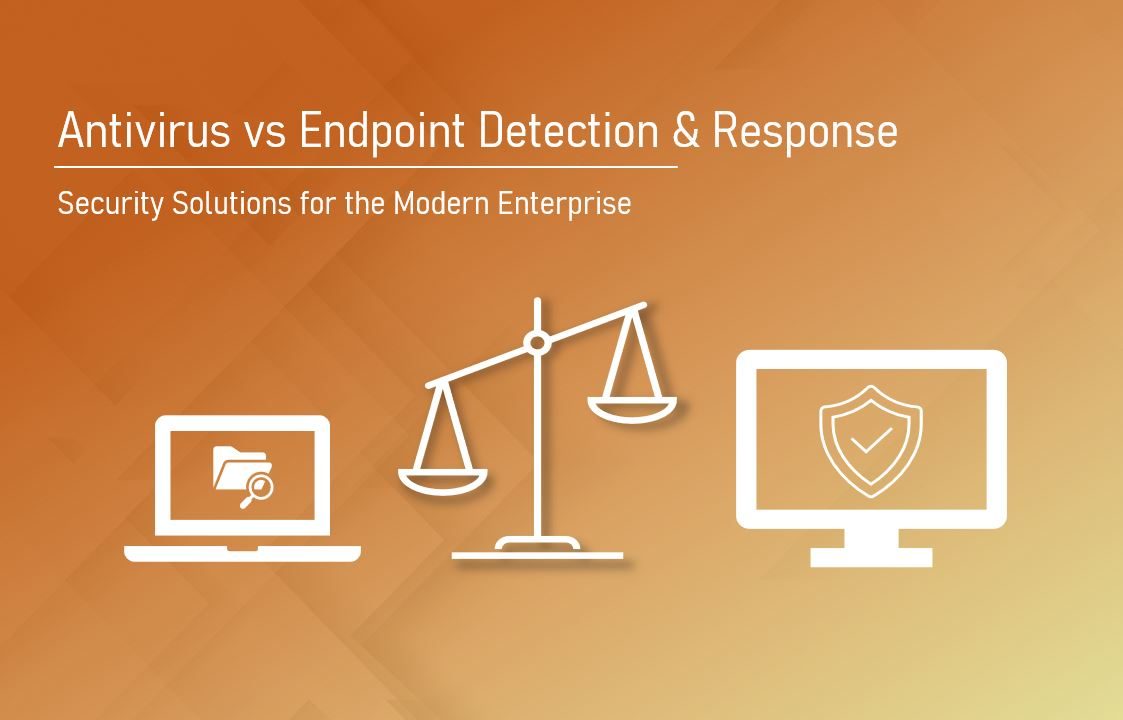
The modern technology landscape is constantly changing, and business owners need to keep up to maintain a technologically efficient and secure environment. One of the latest changes in security and threat detection is the shift from Antivirus software to Endpoint Detection and Response (EDR). EDR is becoming the new norm, but what is it and how is it different from antivirus?
For years, antivirus software was the standard solution. The software scans computers and operating systems and compares files against known malware, which includes trojans, worms, and ransomware. Once these known threats are detected, they are erased from the system.
Meanwhile, EDR monitors endpoints, and stores behavior on a database for analysis. Behavioral analysis allows EDR to detect unusual behavior and identify both known and potentially unknown threats. EDR is a proactive response that recognizes threats before they cause substantial harm to your network.
What is an Endpoint and Why is it Important?
Endpoints, simply put, are points of entry into a network. This can be anything from phones, laptops, servers, and more. With remote work on the rise, organizations find themselves with more endpoints than ever before, each one posing a potential security threat.
As more employees work from home and use their own devices, users need to access network resources from multiple devices and locations. This creates an abundance of opportunities for viruses, malware, and ransomware to make their way into a network and cause a breach.
By deploying an EDR solution, organizations can manage the security of multiple endpoints and identify a large variety of security threats to keep organizations’ information safe.
Antivirus: Benefits and Drawbacks
At the time of its release, Antivirus was the perfect solution to a growing problem; however, the benefits it provided years ago are no longer enough to keep organizations safe. When a business only needed to worry about malware that could be identified with a system scan, antivirus worked. The signature-based detection system scanned files and removed any bad actors. Unfortunately, the drawbacks to antivirus for modern enterprises far outweigh the benefits.
Antivirus is limited to known threats and therefore is not adept to address person-originating threats such as stolen passwords. If the threat does not originate from a file or link, AV software is likely to miss it all together. Therefore, antivirus software is not the best solution to protect your business from modern threats as hackers get smarter and can evade detection from AV software.
According to the Ponemon Institute’s 2020 Cybersecurity in the Remote Work Era, the average cost to remediate a person-originating breach—such as a stolen password—was $268,408. Antivirus has its greatest downfall when detecting these types of threats. So, if your business cannot withstand the cost of a breach such as a stolen password, it is time to consider alternative security measures.
Endpoint Detection and Response: Benefits and Drawbacks
As hackers get smarter and adapt to security solutions, security measures must become more sophisticated. Hence the need for an EDR solution. EDR has a wider scope of capabilities because it monitors behavior and collects data on all endpoints to provide real-time responses. Unlike antivirus, which targets malware after it has been introduced to your system, EDR identifies threats at their origin so you can eliminate them before they cause any harm.
Switching from antivirus to EDR does not leave you vulnerable to the known threats AV targets because EDR includes the same protections as AV and more. EDR can include firewall monitoring, whitelisting tools, and more to ensure each endpoint is fully protected. Additionally, EDR is compatible with many existing security resources so you can add onto your list of security measures or replace what you already have.
This is not to say Endpoint Detection and Response does not have its drawbacks. One of the biggest challenges with this new tool is managing the number of alerts and deciding what is truly a threat. However, there are ways to prevent fatigue from managing alerts with AI and machine learning which can help resolve endpoint events without requiring human resources. Another possibility for managing EDR alerts is outsourcing network security to a Managed Services Provider like PEI, so your IT team is not bogged down by security alerts. While an MSP manages your security, your IT team can tackle larger projects that will drive your business forward.
Endpoint Detection and Response is the progressive security solution for modern enterprises, and it is only a matter of time before organizations still relying on antivirus experience a serious breach.
EDR for the Modern Enterprise
Let’s recap both solutions:
| Endpoint Detection and Response | Antivirus |
| Behavioral analysis of endpoints | Signature based detection |
| Detects both known threats and developing threats | Detects known threats (malware, ransomware, worms) |
| Identify threat at origin | Identify threat after exposure to system |
| Proactive response | Reactive response |
EDR solutions focus on prevention. It works to identify the threat before it causes harm to your network, while antivirus cleans up the mess once a threat enters your system. We all know the saying, “don’t fix something that ain’t broke”. I’ve said it before and I’ll say it again, if you have the opportunity to prevent something from breaking in the first place, why not take it?
This applies to your network security as well. Remember the hefty cost to remediate a breach, $268,408 to be exact? This is a cost many SMBs cannot afford, so why not make the jump to EDR? Antivirus is no longer enough to protect your business from emerging threats to the modern technology landscape. If you want to learn more about EDR and how it can better protect your business, contact PEI today!
Anna Ross, PEI




